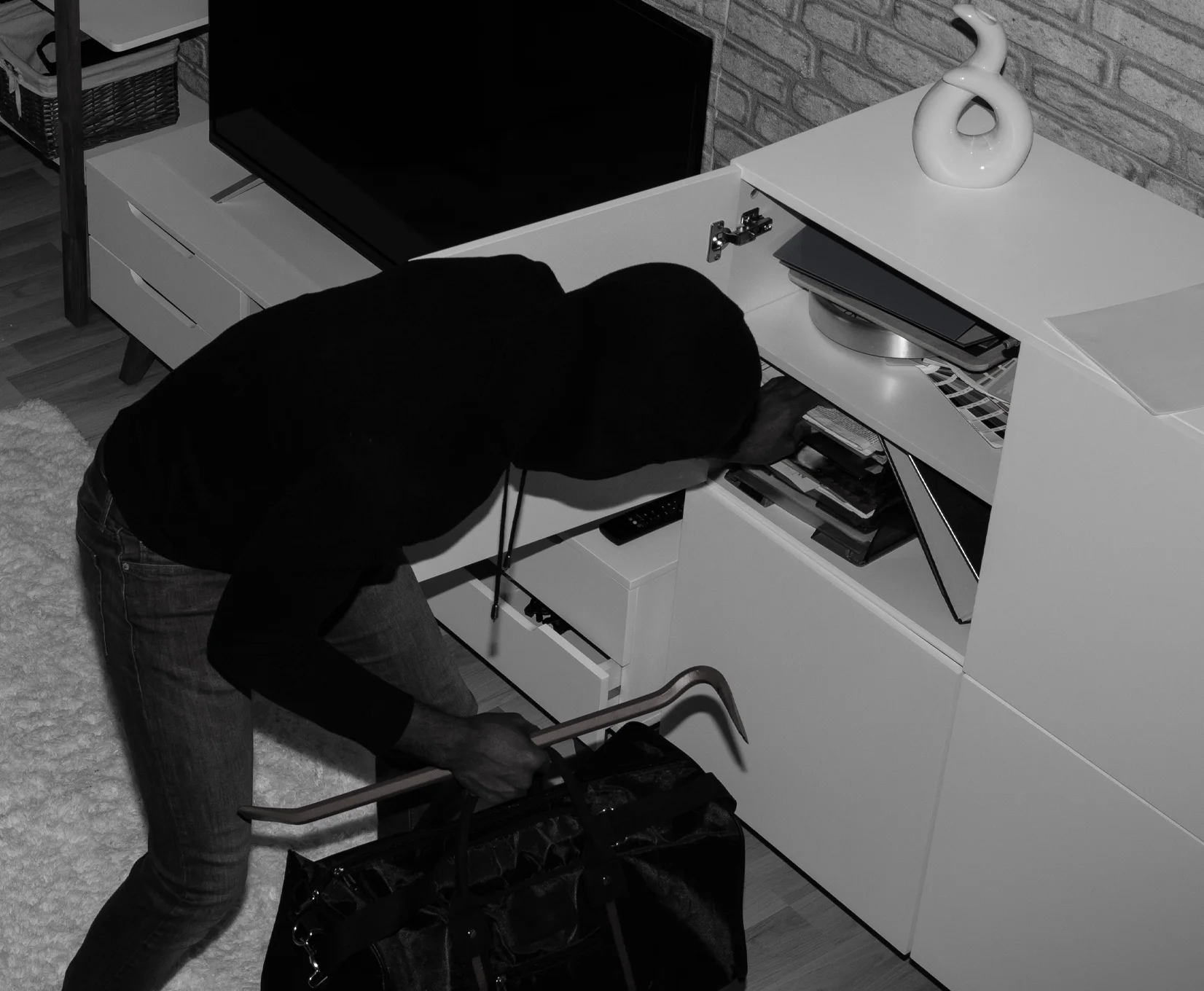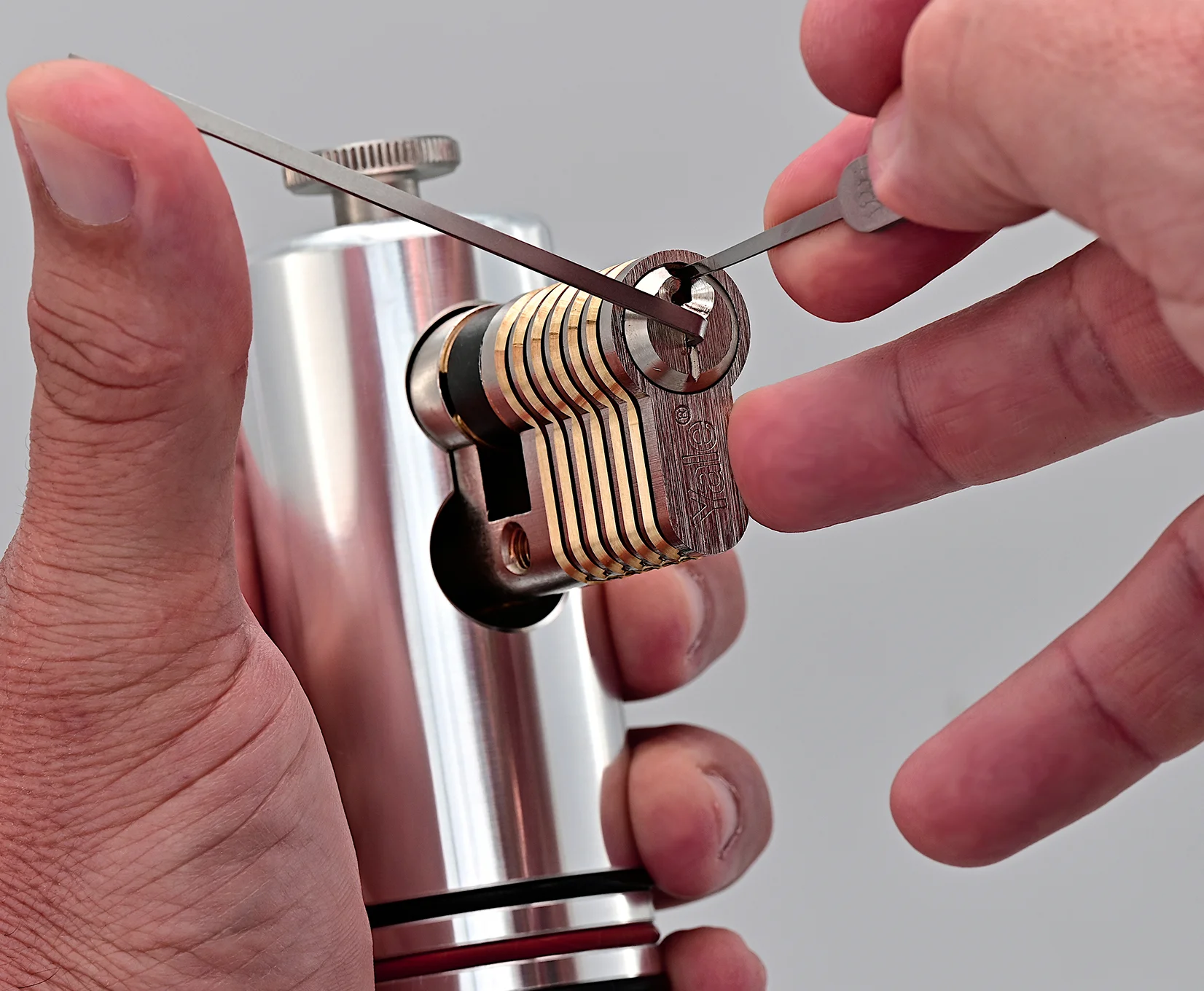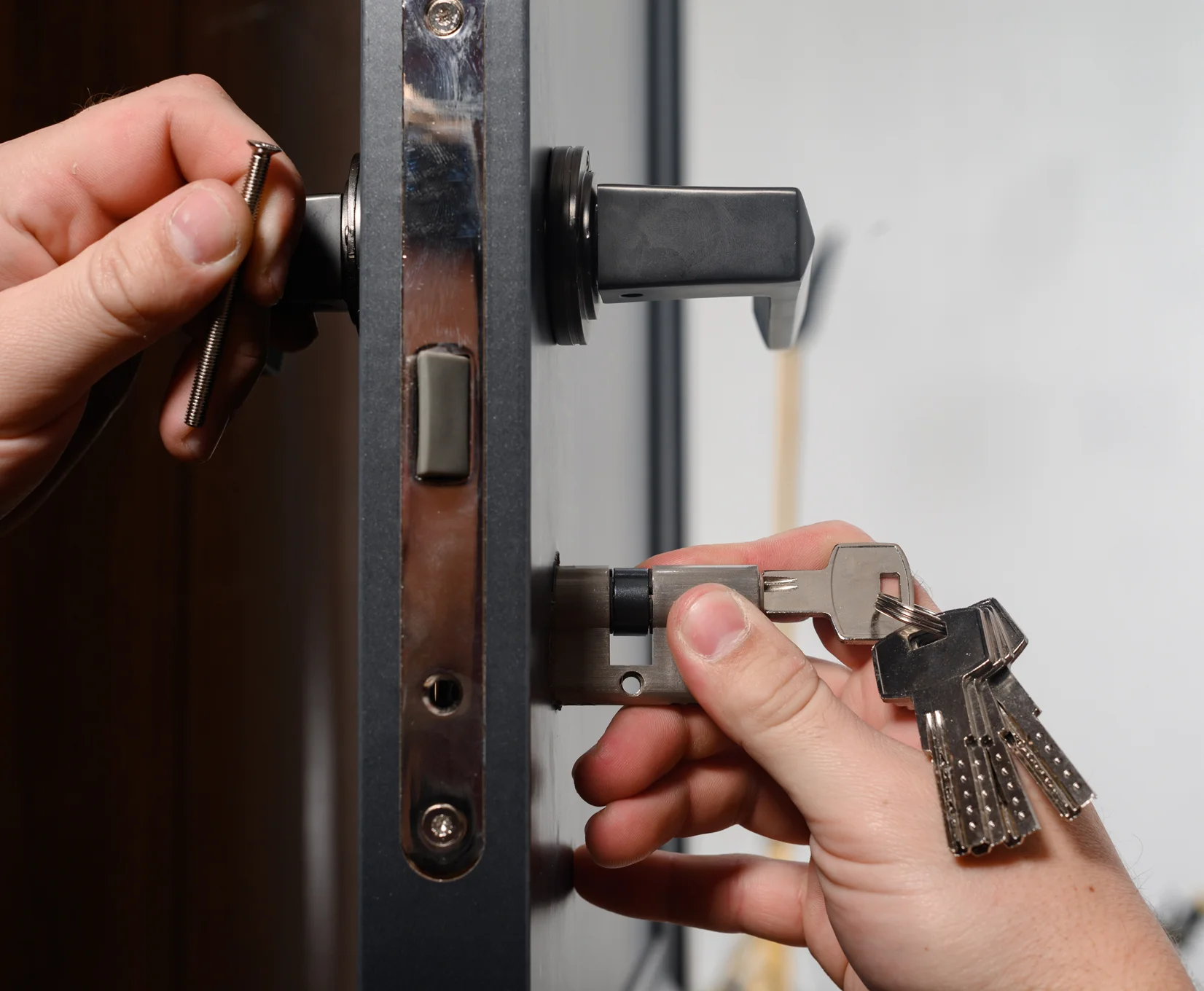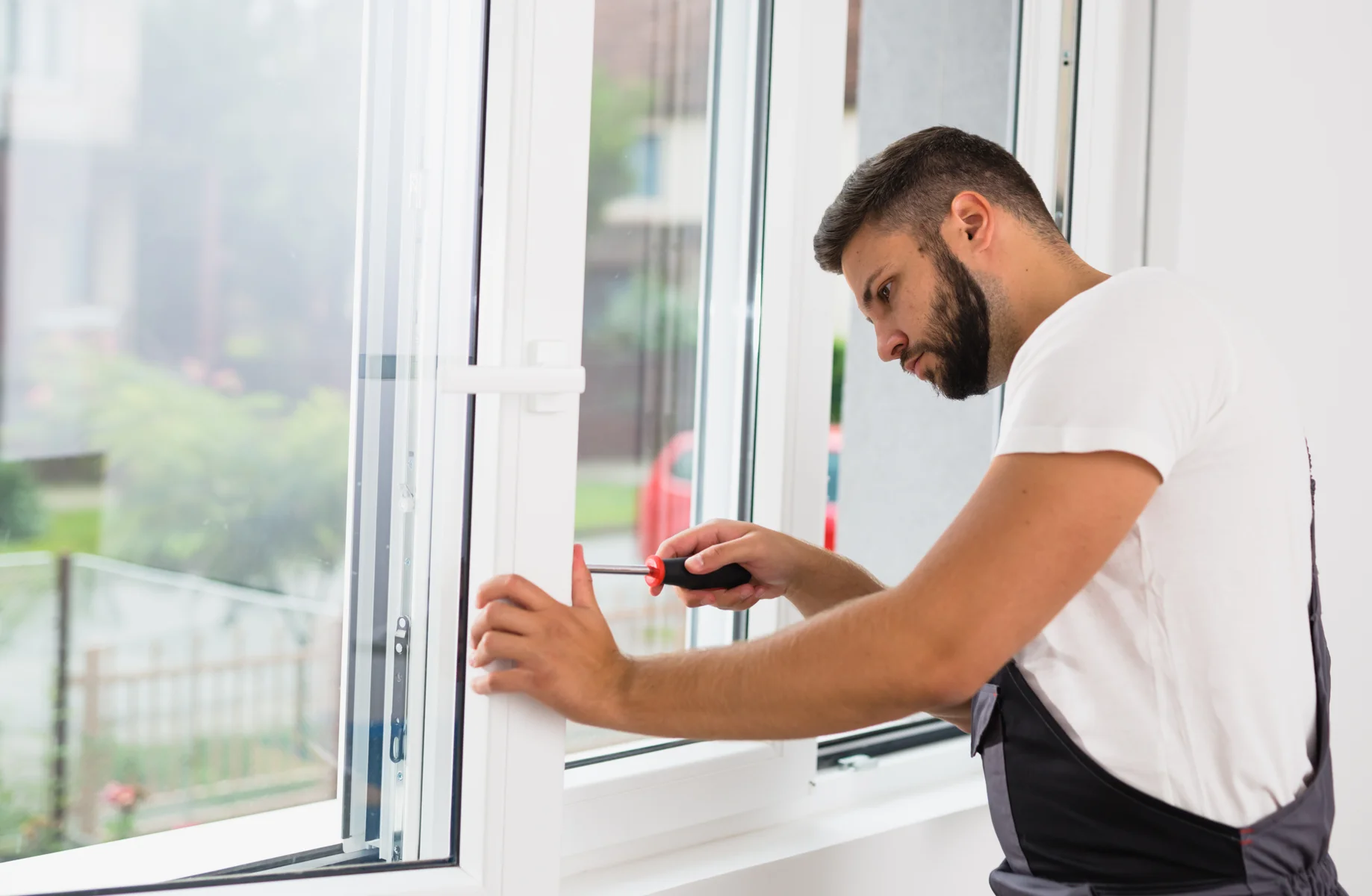
Reading time: 6 minutes / Lars Buchwald / 8 October 2025
Do-it-yourself Security Check:
How to Properly Inspect Your House & Flat
Contents of this Article
→ Don’t panic – security starts with a first glance
→ Why basic mechanical security comes first
→ A typical real-life example
→ Facts versus myths: how burglars really operate
→ The security check in practice – step by step
→ Doors, windows & more – what you should look out for
→ The main weak points at a glance
→ What to tackle first? How to set the right priorities
→ Useful sources and further advice
→ My conclusion: security is not a luxury but a responsibility
First of all: don’t panic. A good security check isn’t a huge task, but a quick, targeted run-through of the most important weak spots in your house or flat. Sometimes a few simple measures are enough, and you’ll quickly know where the problem lies — and where a burglar will most likely give up after a minute or two and move on.
Why you should spend a few minutes first
The police and security experts recommend checking the basic mechanical protections first: door cylinders, security escutcheons, hinges, frames and windows. These basic measures make the biggest difference and can significantly increase your security. (Police advice) A simple practical example A situation that, sadly, still occurs thousands of times in Germany: a perfectly ordinary front door, the lock cylinder protrudes roughly 8 mm, and there is no solid security escutcheon. Instead there’s a thin strike plate typical of installations from the 1970s or 1980s. This is not merely a weak spot but more of an invitation to the sort of people you never want in your home. Often that’s enough for a burglar to gain access using simple, fast methods. If, by contrast, you have cylinders with pull- and drill-protection, a proper security escutcheon and a sturdy strike plate, an attack takes much longer — and most offenders will then look for an easier target.
Now some of you might be thinking: “Hang on — you sell the very tools used to open locks.” That’s true — but it’s only half the story. According to the police, in around 80% of burglaries simple tools such as screwdrivers or crowbars are used, not lockpicks, pipe tools or other specialised devices. Crime statistics confirm this: force and levering methods are the norm; delicate “picking” is the absolute exception. Source: police
We explicitly support only legal use by certified professionals (authorities, locksmiths, security companies, training organisations) — we do not tolerate misuse. Where there is reasonable suspicion we cooperate with the authorities.
How to Carry Out the Security Check – Step by Step
Set aside 30–45 minutes for the first round. Take a torch, tape measure or ruler, ideally a smartphone (for photos) and a notepad. Work your way through room by room – from outside to inside.
Front Door / Flat Door
What to check?
• Measure cylinder projection: check how far the profile cylinder protrudes from the door. Too much projection is dangerous, as the cylinder can be gripped, pulled or damaged more easily. The less it sticks out, the better – though it must remain usable. The clear recommendation is max. 3 mm. If you find significant projection, consider replacing it with a shorter cylinder.
• Security escutcheon in place? Check if a solid escutcheon (with cylinder cover/pull protection) is fitted and whether screws are not accessible or too short from the outside. Police and regional authorities recommend tested security escutcheons and provide lists of approved products. (Police advice)
• Strike plate & frame: tap gently with your fist or a small hammer to test stability. If the strike plate is loose or fixed only with short screws, it can be forced open easily. Good screws penetrate deeply into the frame (at least 3–4 cm into solid wood or with proper wall anchors).
• Hinges / hinge side: check if the hinges are firmly fixed and move smoothly. For outward-facing hinges, ensure security bolts are present. If missing, this side may present a weak spot.
Next steps: If you discover projection, no escutcheon or a weak strike plate – arrange an appointment with a locksmith and use at least a cylinder with proper protection (DIN/VdS standard). Ideally, get local professional advice to know exactly what is needed to secure your door.
Windows & Patio Doors
What to check?
• Handle lock: can the window handle be locked? Many burglaries happen through unsecured, tilted or incorrectly closed windows.
• Fittings & locks: windows should lock at multiple points (mushroom-head fittings or similar). Look for missing or worn components.
• Glass type: single glazing is far less secure than double glazing or safety glass. For particularly exposed entry points, use burglar-resistant glass or laminated safety glass (LSG). Police recommend securing windows just as consistently as doors.
Next steps: For easily accessible windows, add retrofit solutions (window bolts, lockable handles). For new builds or replacements, pay attention to resistance class.
Cellar & Side Entrances, Garage Door
What to check?
• Door strength & lock: cellar doors are often weak. Check the lock and frame. Essentially, the same requirements apply as to your front door.
• Garage door: if the garage has an internal connection to your home, it’s a potential entry point. Secure the connecting door and garage with the same attention as the front door.
Other weak points often overlooked
• Letterbox slot: very large openings allow manipulation with wire or tools. Older doors often have letter slots built into the door or side panel. If so, consider sealing it permanently and installing another model.
• Shutters & controls: electric controls should be protected against tampering; shutters themselves can be levered open. There are special locks that can be fitted from inside, engaging directly with the shutter to prevent lifting.
• Outdoor lighting & visibility: well-lit exterior areas and clear lines of sight (no dense hedges right at the entrance) reduce the risk considerably. Offenders prefer cover and darkness.
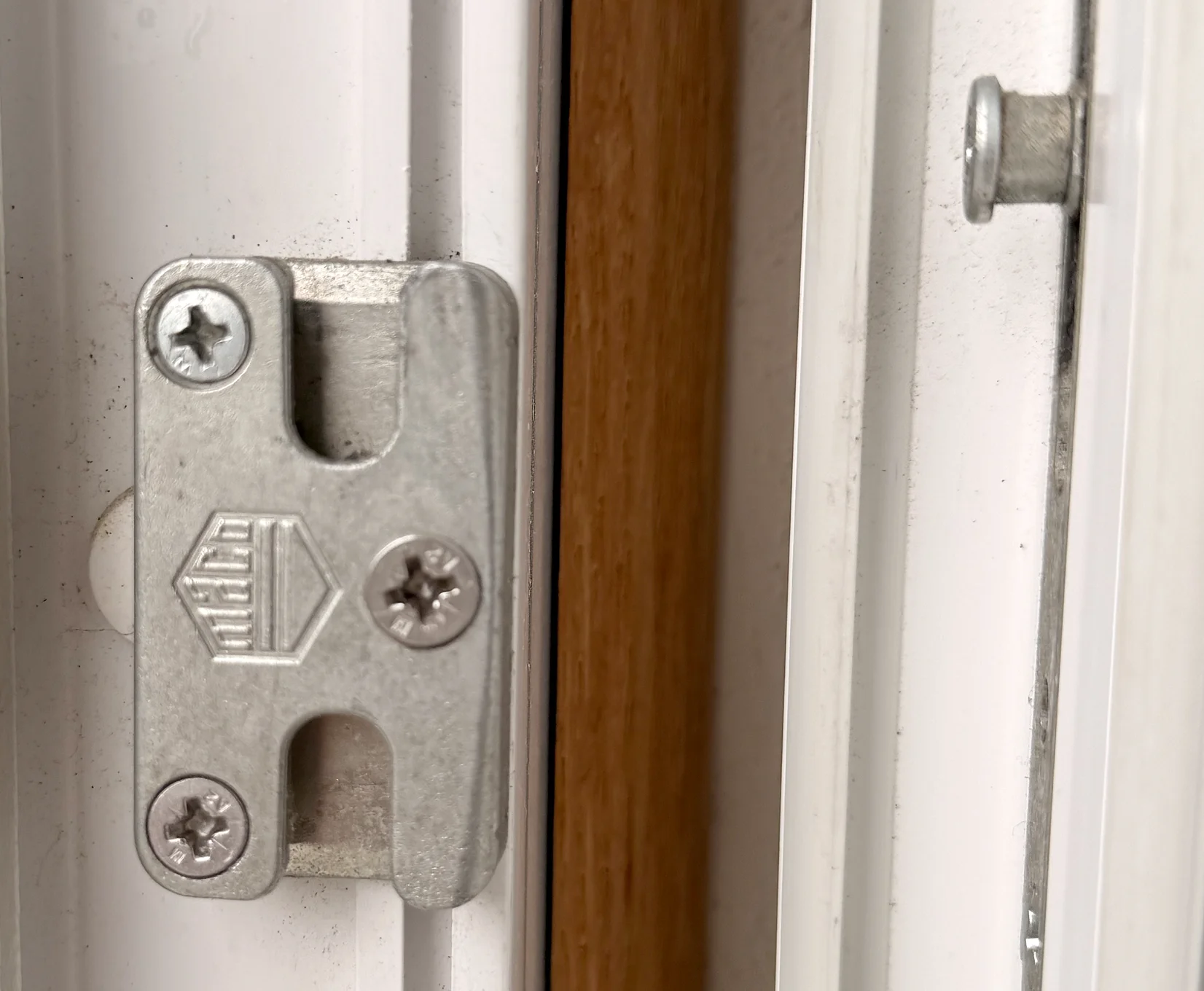
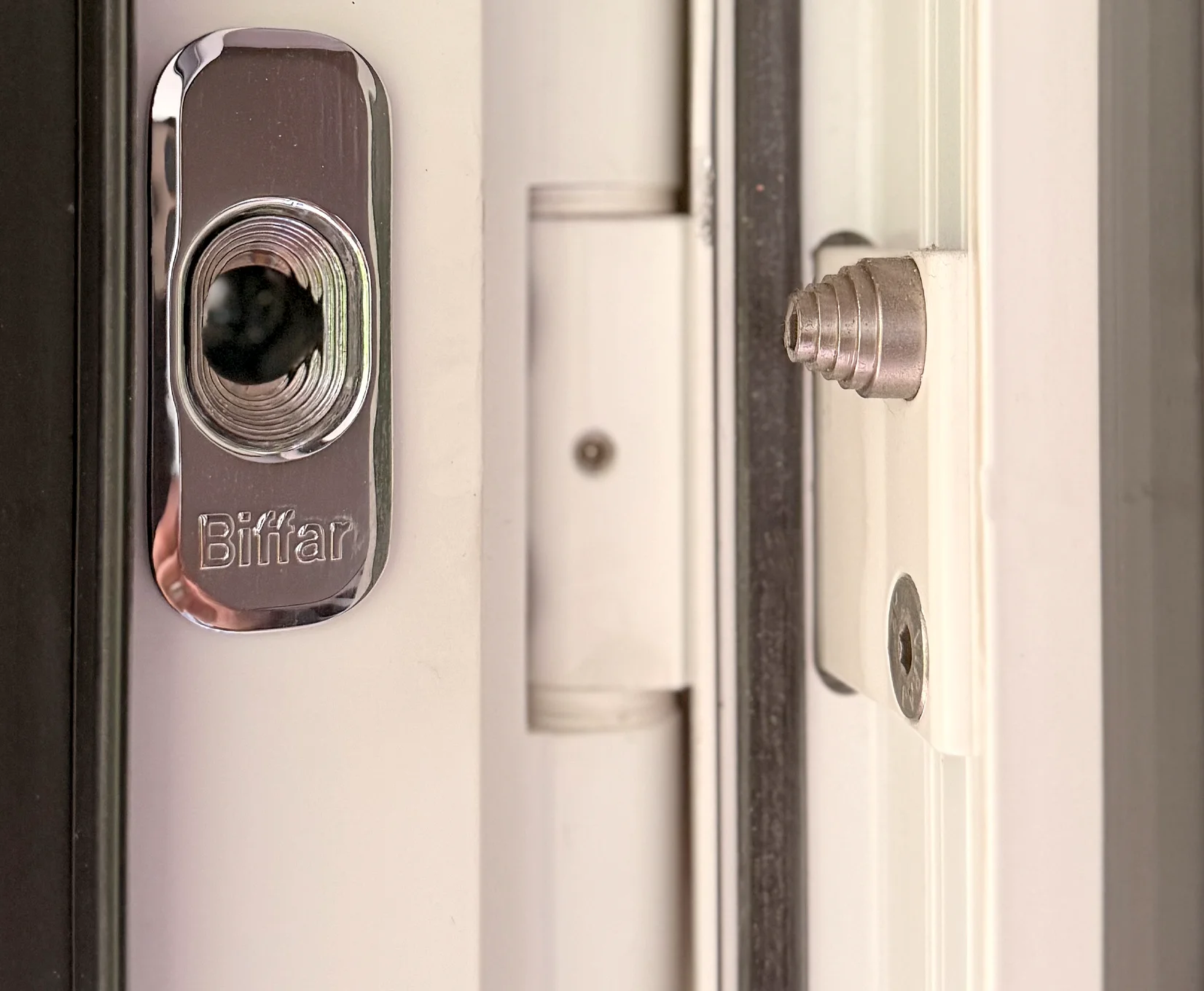
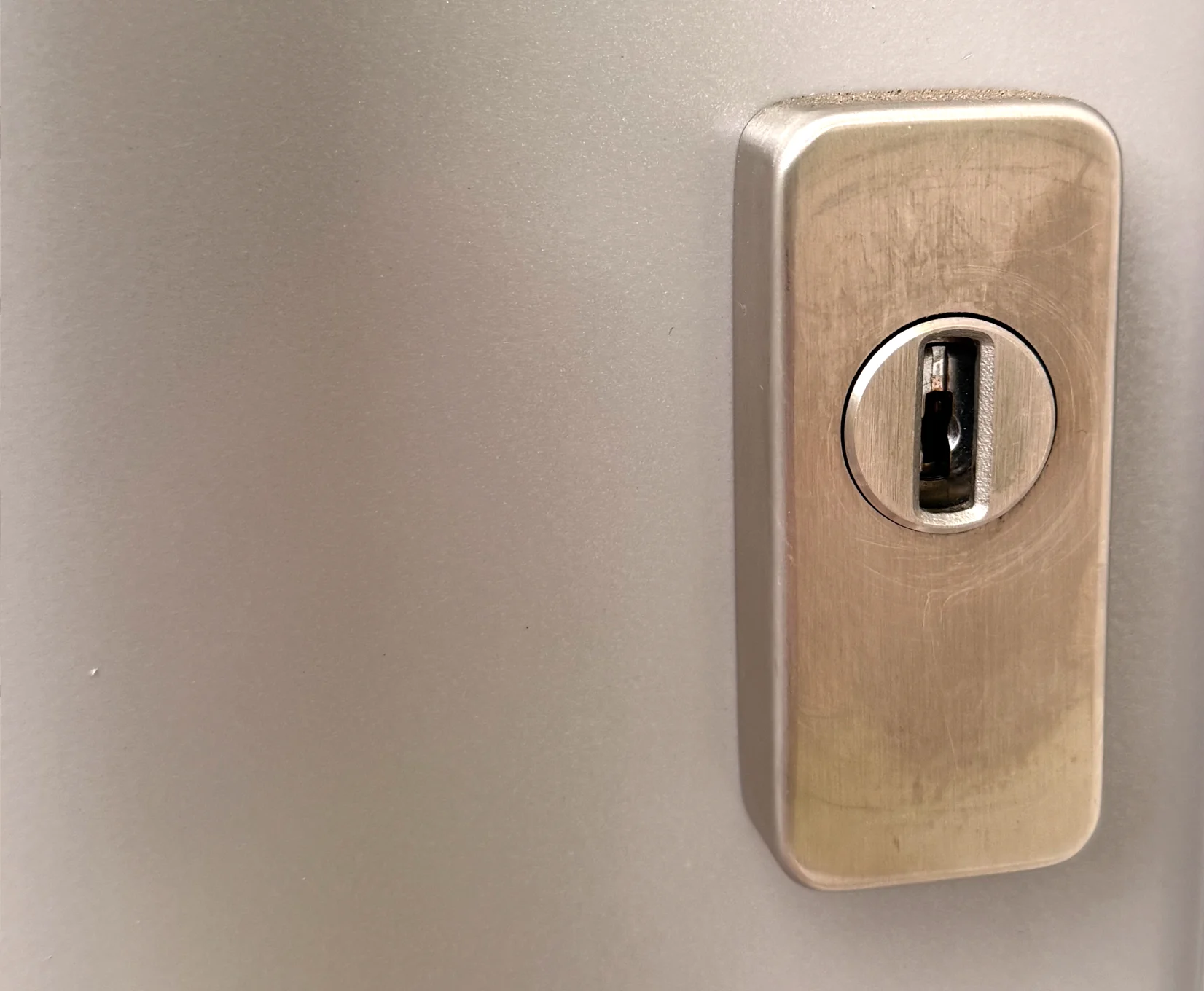
The Right Prioritisation – What to Do First?
If you do not find any glaring issues that need to be solved immediately, we suggest tackling changes in this order:
• Front door: cylinder + security escutcheon + strike plate
• Ground-floor / easily accessible windows: lockable handles / mushroom-head fittings (in many cases easy to retrofit)
• Side entrances and garage
• Visibility and outdoor lighting
Short term: replace screws in the strike plate, retrofit a lockable window handle, close shutters properly.
Medium term: retrofit a cylinder with VdS certification and a security escutcheon. VdS-tested components provide proven protection against drilling, forcing and sophisticated opening methods.
Helpful Sources:
• Police advice on technical security and manufacturer directories (Police Advice)
• Practical article on cylinder projection and how to identify it (Police Advice)
• Regional police advice services (free on-site consultation)
Let me be honest with you: At Multipick we are convinced – quality pays off. A high-quality profile cylinder with manufacturer or VdS certification and a solid security escutcheon are not gimmicks, but the foundation of any reliable burglary protection. Cutting corners here risks the one thing nobody wants to experience – a break-in. VdS-tested components really do make a difference, because they make attacks considerably harder and can buy crucial minutes in an emergency.
And on a personal note: Unfortunately, I myself have been the victim of a burglary. Had I already known then what I know today, with today’s technical standards and my experience, it most likely would never have happened. Such an intrusion into your private space is unforgettable. It’s not just the material damage – it’s that disturbing feeling that someone was there who had no right to be. My advice: don’t wait until it happens. Yes, good security costs money and sometimes a little effort. But believe me – the price after a burglary is many times higher.
FAQ – Everything You Need to Know
1. What is the quickest way to start a DIY security check?
Begin outside at the front door, then move on to ground-floor windows, followed by side and cellar doors. For each point, simply check: visibly weak cylinder (projection), missing/light security escutcheon, loose strike plate, old window fittings without mushroom-head cams.
2. How do I correctly measure cylinder projection – and what counts as secure?
Place a ruler flush against the security escutcheon and measure to the cylinder face. Ideally there should be no visible projection; in practice, around 1–3 mm is acceptable. If the cylinder protrudes noticeably (e.g. > 3–4 mm), it can be gripped/pulled more easily – replace it with the correct length and combine it with a solid security escutcheon.
3. How can I recognise a really good security escutcheon?
It should be solid (steel), screwed from the inside, include a cylinder cover/pull protection, and completely conceal external screws. Ideally, it is tested to recognised standards (e.g. DIN 18257 for escutcheons) and fits the cylinder without play. Thin, surface-mounted decorative rosettes without cover are a clear warning sign.
4. Strike plate & frame: which simple checks are worth doing straight away?
Tap gently on the strike plate and frame: if anything wobbles or the screws look short, replace them with longer ones (so they penetrate 30–40 mm into the load-bearing frame). A reinforced strike plate distributes force better and makes levering attempts harder. Also check the closing action: if the latch sticks or “springs”, the chances of forced entry increase.
5. Windows & patio doors: what makes the biggest difference?
Lockable window handles and retrofitted mushroom-head fittings provide a noticeable increase in resistance. Always close tilted windows – they are not a “ventilation security mode”. For replacements or new builds, choose burglar-resistant versions (e.g. RC classes according to EN 1627); for existing windows, use certified retrofit products for both handle and hinge sides.
6. Rented flats: what can you do yourself – and what should be agreed with landlords?
Reversible measures such as lockable window handles or longer strike plate screws are usually unproblematic. Any intervention in the front door, frame or shared property (e.g. entrance doors in multi-occupancy buildings) should be agreed in writing beforehand. Tip: document the current condition with photos – this makes both reversal and agreements easier.
7. Smart locks & access convenience: more security or new risks?
Electronics do not replace mechanics: the basis remains a high-quality profile cylinder (e.g. to DIN 18252) in combination with a security escutcheon. With smart locks, make sure they include an emergency and hazard function (indoor operation even with a key inserted) and that installation prevents manipulation. Updates, secure app access and two-factor authentication are essential – otherwise comfort is the only gain.
8. Garage, cellar, side entrances: where are the typical “forgotten” weak points?
Connecting doors from the garage into the house need the same level of protection as the front door. Thin cellar doors, old box locks and loose fittings are common entry points. Also check basement windows and light wells; simple retrofit grilles or screw fastenings can make a big difference quickly.
9. Small budgets, big impact: what should I prioritise first?
Under €100: longer screws for the strike plate, lockable window handles, adjusting fittings. Around €200: a solid security escutcheon and, if needed, a shorter, better cylinder with pull/drill protection. From €300: window retrofit security (mushroom-head cams), reinforced cellar door/strike plate set and outdoor lighting with dusk or motion sensors.
10. Maintenance & documentation: how do I keep my security status up to date?
Keep a simple checklist with dates and photos (door, cylinder, fittings, windows). Inspect every six months: are screws tight, do locks engage, do shutters close properly, are outside areas clearly visible? Rectify deficiencies promptly and, if unsure, consult a qualified locksmith or police advisory service – this way your protection remains effective in the long term.
About the Author
Lars Buchwald has been an integral part of the Multipick team since 2006, where he dedicates his passion and expertise to marketing and graphics. As a trained graphic designer and copywriter, he brings a wealth of experience and creativity to his work, which enables him to convey the messages of the ingenious tools in an appealing and convincing way. With a keen sense for the needs of the target group, he steers Multipick's marketing fortunes. His commitment is characterized by a high degree of sensitivity and the right richer at the right time.
As a native of Bonn, Lars not only has close ties to the region, but has also firmly integrated his passion for marketing spear tools into his professional work. His attachment to the city is reflected in his work and gives his marketing campaigns an authentic, Bonn touch.
Related Articles
About Multipick
Multipick was established here in Bonn in 1997 and has had its headquarters and production facilities here on the Rhine ever since.
Why should we leave here? Anyone who has been here before will agree that it is a very beautiful place and that the people are ‘typically Rhineland’, open-minded and friendly. From an early stage, we began to occupy ourselves with a wide variety of entry tools. We tried out lock snappers and core extractors such as the Bell and gathered a wealth of experience with a wide variety of tools. Whether it was a lock pick set or special tools for fire brigades and locksmiths, in the end the door or window had to be opened. In line with the motto, you got the problem and we got the solution.
Many tools, irrespective of hobby or professional, are dispatched from our warehouse to destinations throughout the world.
Opening tool kits for caretakers and locksmiths, pick sets and lock picking accessories for Locksport enthusiasts and Hobbs hooks for specialists to unlock locked safes. There are thousands of different ways to deploy our specialised tools. Our TFG latch plates and key turners allow a closed door to be reopened. QA Pro 2 and our V-Pro core pulling screws can be used to open a locked door. We also offer milling burrs and drill bits for those situations where there really is no other way. Many useful aids such as MICA opening cards, wedges, door latch spatulas, door handle catches and spiral openers, which are all useful tools to help you get the job done. But even if things get a bit complicated, you are in good hands with us. Products such as the Kronos and Artemis electric picks are our top highlights. Anyone who likes to open dimple locks or disc locks will be delighted with the ARES system. For opening windows, we offer you a range of top products from Kipp-Blitz. Favoured by emergency services such as the fire brigade, THW (Federal Agency for Technical Relief) and police. Many of our tools are manufactured in-house. This gives us the liberty to manufacture quickly and in a customer-orientated manner. No lengthy supply chains and subcontractor dependencies. This has a number of advantages both for you and, of course, for our environment. One big advantage is that you get everything from a single source, enabling us to offer you consistent quality. This is also our promise to you, all from a single source, Made in Germany, Made in Bonn - promised.




































